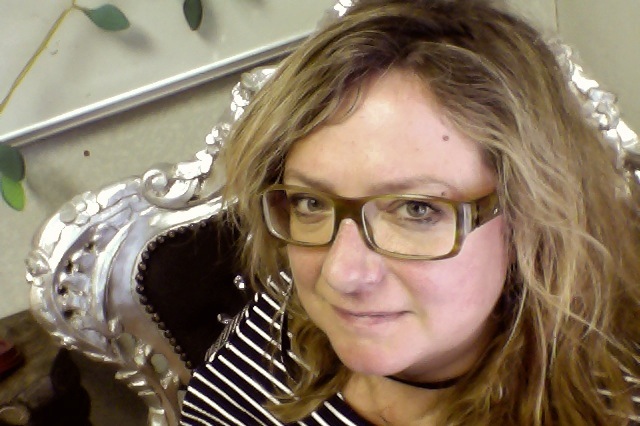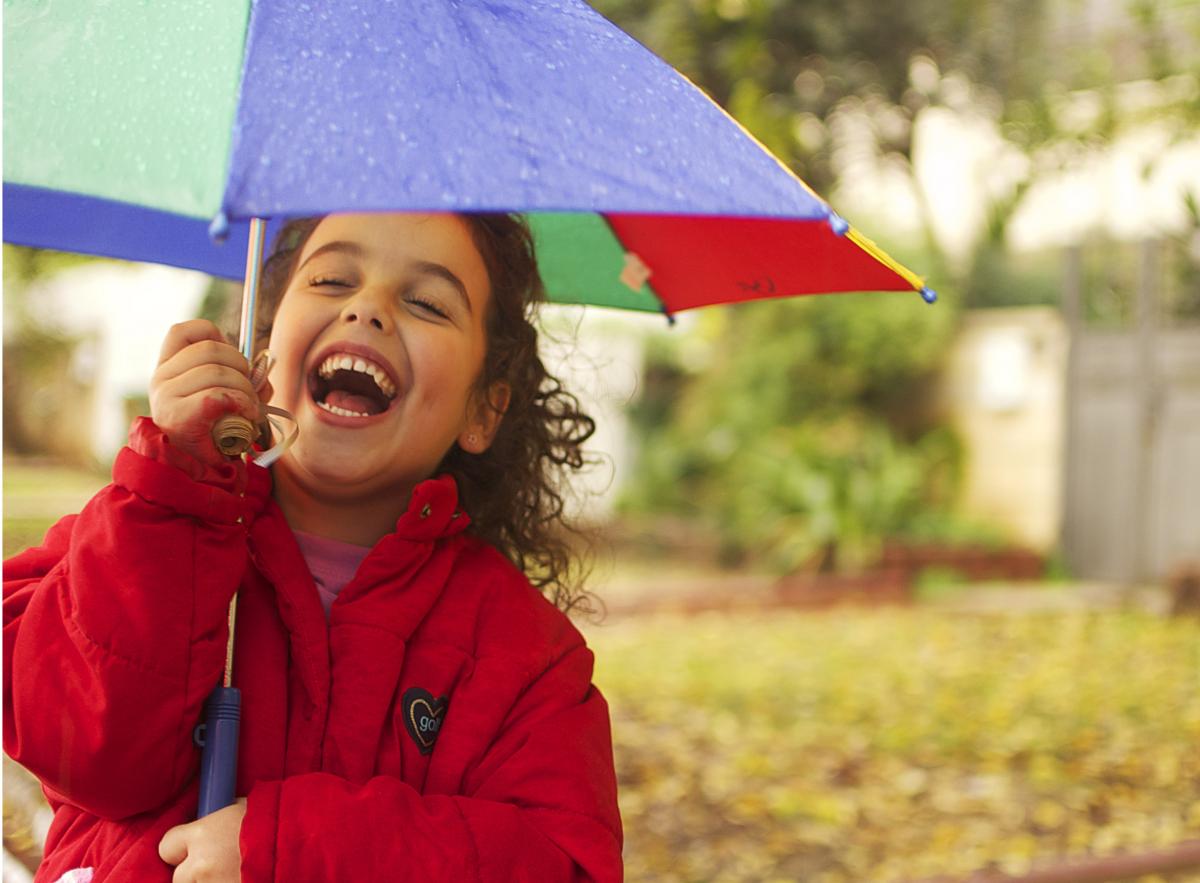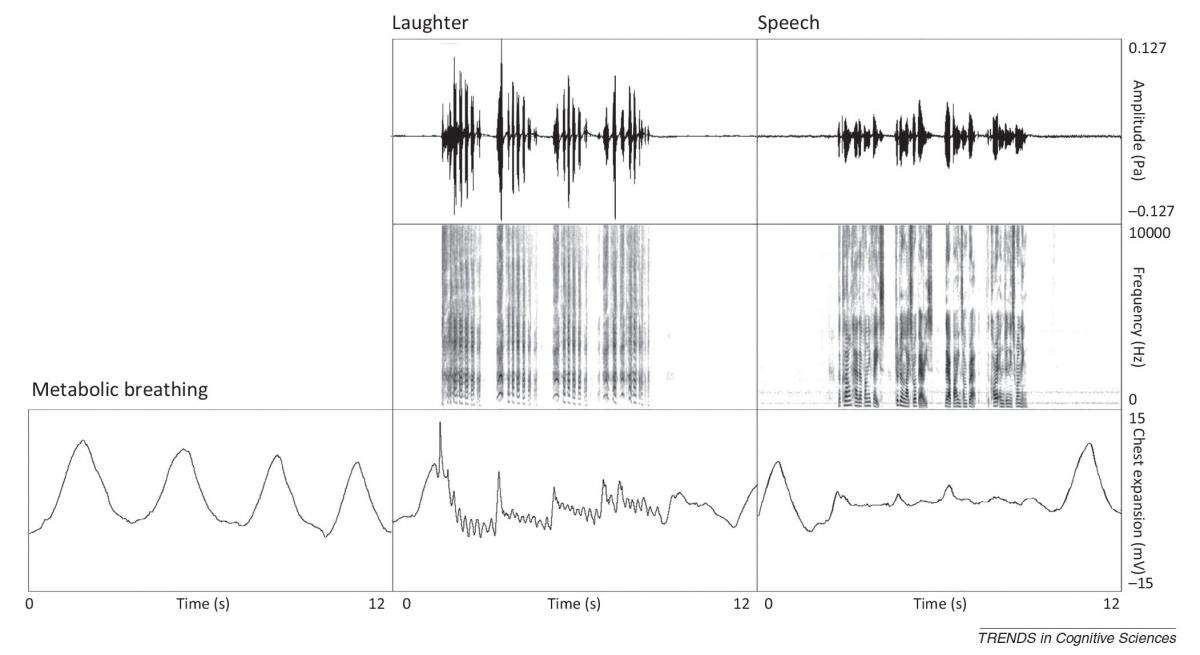Learning from laughter Understand article
Neuroscientist and stand-up comic Sophie Scott explains the complexity and social importance of laughter.
How do you get an auditorium full of scientists to laugh? For Sophie Scott, the answer is simple: you play audio clips of people laughing uncontrollably and the reaction is infectious.

Image courtesy of Sophie Scott
But for Sophie, this is more that just a useful way to break the ice with her audience. She works on the neuroscience of laughter at University College London (UCL) in the UK. Her research looks at the physical process of laughing and also its social role and how we use laughter to mediate relationships. Laughter isn’t just funny, she says, it’s also incredibly useful.
Imagine you have travelled to a foreign country where you don’t know the language or the culture; how do you communicate? It turns out that there are very few universal expressions and exclamations. Most people will recognise an expression of fear or distaste, but joy? Pleasure? One positive emotion that Sophie has shown to be universal is laughter. On the savannah of Africa, during Sophie’s research, when a hunter feels silly or embarrassed he begins to laugh and soon he and Sophie’s research team are laughing together.
Back in the auditorium, Sophie uses audio clips to get us laughing. It is not just the audio track that’s making us laugh, she says, but also the reactions of our neighbours and colleagues sitting next to us. We might think that we laugh at jokes, but we laugh mainly to interact with other people – a trait that extends across mammalian species, from primates to rats, for whom laughter is associated with play and tickling, just like with us. “It’s a very social behaviour,” Sophie explains. We interact with people by talking, which is a solely human skill, but then we use a very old mammalian behaviour, laughter, to show people that we like them.
If you ever hear someone laugh, says Sophie, your brain activates neurons and gets ready to laugh as well, because we are primed to join in. There are two types of laughter – the truly involuntary laughter during which you can hardly breathe, and a ‘fake’ kind used as a social lubricant – and Sophie has shown that the brain activation still responds to ‘fake’ laughter. This is true even though the two types have different physical and neurological signals and we can tell the difference between the two. Sophie’s research has shown not only that both types of laughter trigger neurons prompting us to join in, but also that ‘fake’ laughter prompts our brains to try and understand why the person is laughing and how we should respond.

Image courtesy of Alon; image source: Flickr
So laughter is a social tool that we use to convey different emotions, to bond with people and to signify that we are not a threat. And, says Sophie, although we can tell the difference between ‘fake’ and ‘real’ laughter, the ‘fake’ laughter is still useful for these social roles.
Sophie recalls an incident she recently saw on the train to illustrate her point. Two men sat down at a table on the train, joining a woman who was working. The woman got up to move away, but as she was explaining why (she said she didn’t like the smell of the men’s coffee), she laughed and so made them laugh as well. This, says Sophie, was the perfect way to defuse the situation and make sure that she didn’t offend the two men. Yet, says Sophie, she is sure that if she had asked any of the people involved, they wouldn’t have remembered the laughter at all.
According to Sophie, we all underestimate how much we laugh even though we use laughter every day to promote bonding and de-escalate confrontations and negative emotions. For those of us who talk about liking people who make us laugh, Sophie has a revealing takeaway message. Rather than liking people because they make us laugh, perhaps we laugh with them because we already like them.
Understanding the behavioural and neurobiological bases of laughter, says Sophie, means more than thinking about jokes. It could provide a vital link between human language, relationships and emotional states. So don’t just ask for someone with a good sense of humour when writing your dating profile; pay attention to see if you and your date enjoy laughing together.
Physical basis of laughter
To understand laughter, says Sophie, you can’t look just at the brain. You have to look at a part of the body that psychologists and neuroscientists don’t normally spend much time looking at: the ribcage. You use your ribcage all the time to breathe. You use the intercostal muscles, the muscles between your ribs, to bring air in and out of your lungs by expanding and contracting your ribcage, and that movement follows a gentle sinusoidal pattern. As soon as you start talking, you breathe completely differently, with very fine movements of the ribcage squeezing the air out.

Image courtesy of Scott et al 2014
But breathing can be interrupted by laughter. When you laugh the intercostal muscles start to contract very regularly, and you get a very marked sort of zig-zag squeezing. Each of those contractions gives you a sound – “Ha!” As the contractions run together, you can get spasms and wheezing. Listen to your friends laugh and you’ll notice that they reach much higher pitches than they normally can because of the force of the air being expelled by the lungs. These pitches increase as the physiological arousal in the person laughing increases. It can also lead to wheezes, snorts, grunts and whistles.
Just as different parts of the brain prompt ‘fake’ and involuntary laughter, Sophie’s research has found several acoustic and phonetic differences between ‘fake’ social laughter and involuntary mirthful laughter. Some of these differences link directly to the greater forces generated during the involuntary laughter, which are extremely hard to produce voluntarily. Sophie believes that this suggests ‘fake’ laughs are not necessarily simply weaker forms of ‘real’ laughs, but have their own clear markers, reflecting their social importance.
References
- Scott S et al (2014) The social life of laughter. Trends in Cognitive Sciences 18(12): 618–620. doi: 10.1016/j.tics.2014.09.002
Resources
- Sophie recently presented a TED talk called ‘Why we laugh’.
- For a longer talk on ‘The Science of Laughter’, watch Sophie’s lecture at the Royal Institution, UK.
- Sophie also wrote an article about some of the difficulties in getting people to laugh for science:
- Scott S (2014) Beyond a joke: how to study laughter. The Guardian (UK) 10 July.
- Medical research related to energy and metabolism can be relevant to further discussion with your students. For example, see:
- Buchowski MS et al (2005) Energy expenditure of genuine laughter. International Journal of Obesity 31: 131–137. doi: 10.1038/sj.ijo.0803353
- Other research has also shown that male and female brains respond differently to humour. To find out more, read:
- Hayes E (2010) The science of humour: Allan Reiss. Science in School 17: 8–10.
Review
As teachers, we must be familiar with emotions and human interactions and how they affect learning and the social climate in school. Laughter is one such interaction where we can benefit from new findings in neuroscience. The findings reported here can be used both for teachers’ professional development and directly in lessons, for instance in interdisciplinary collaborations between biology, chemistry, psychology and social sciences.
The science of laughter could be addressed in a discussion about human interactions and emotions, something we usually do very early in school. The different types of laughter can be discussed using emojis and photos with younger students, and more abstractly and using neuroscientific data with older students.
I would suggest that teachers experiment together with the students on the topic of basic emotions and then compare their outcomes with the reported research results. How do we differentiate between ‘fake’ laughs and ‘real’ laughs? Can we accurately interpret the difference with our friends? Can a computer analyse sound data to determine if the recorded laughter is real or faked?
Ingela Bursjöö, Johannebergsskolan, Gothenburg, Sweden





